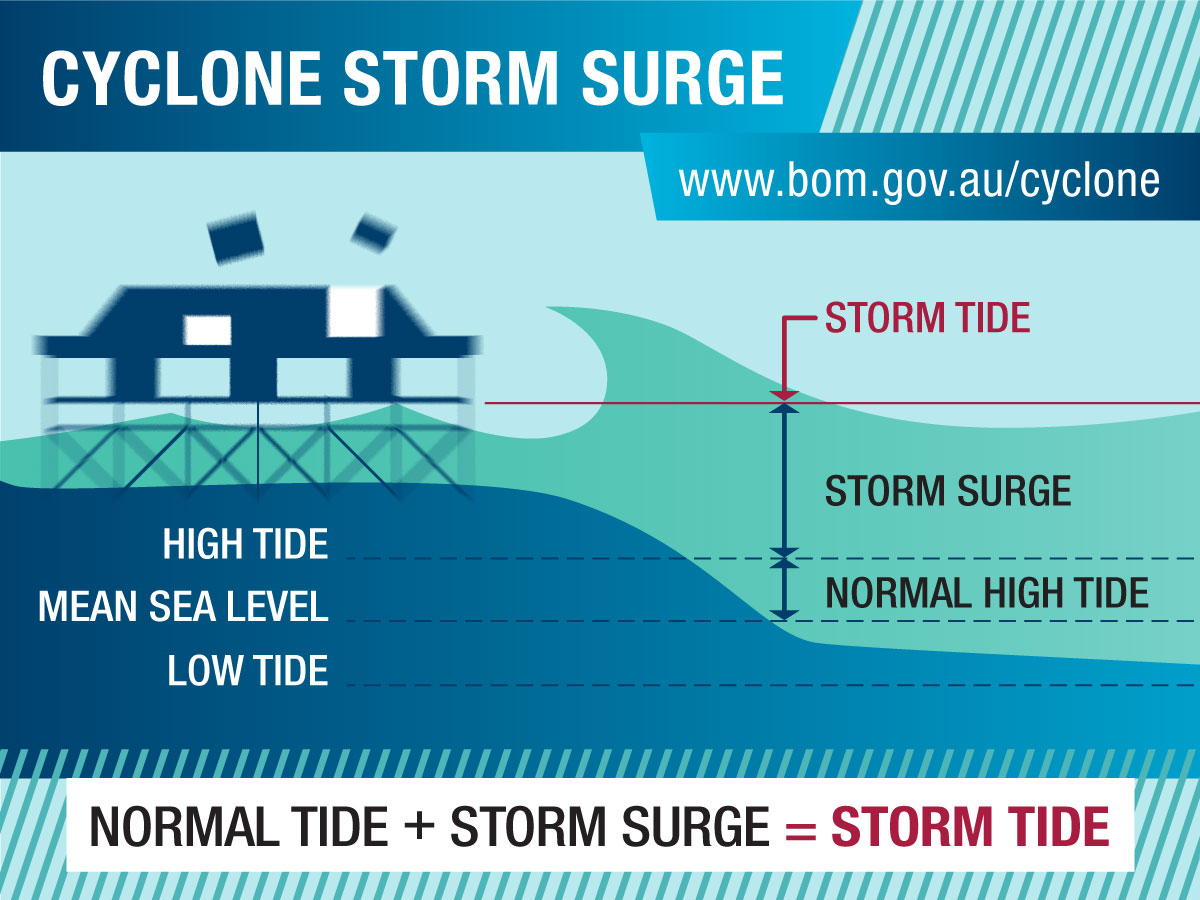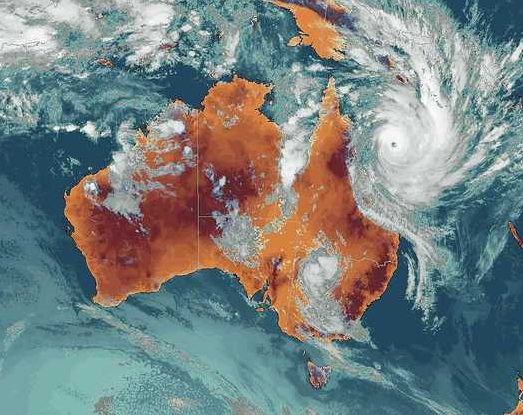Tropical cyclones at sea: the ocean below the storm
24 May 2017
Tropical cyclones can have savage effects as they cross the coastline, with the potential for torrential rain, flooding and destructive wind gusts to cause widespread damage to property and infrastructure. But they start life at sea and the interaction between cyclones and the ocean can be just as ferocious.
Spinning up a storm: cyclone formation
A tropical cyclone is a type of low pressure system that forms over warm waters in the tropics. On average around 11 form each tropical cyclone season (November to April) in waters surrounding the Australian continent. For cyclones to develop the ocean temperature must be very warm—exceeding 26.5 °C to a depth of about 60 m. If the air is also humid and unstable enough to allow thunderstorms to very high altitudes then the updrafts associated with the storms create an area of low pressure near the sea surface.
Forces caused by the Earth’s rotation—known as Coriolis forces—cause the air drawn into the region of low pressure to rotate. (Tropical cyclones rarely form at latitudes less than five degrees as the Coriolis force is zero at the equator.) Once the rotational flow of the cyclone is established it functions like a heat engine. It takes in energy from the warm surface water (via evaporation) and releases this energy into the atmosphere when water vapour condenses to form clouds, and into the upper atmosphere via radiation from the tops of high-altitude clouds. The amount of energy released into the atmosphere by an average cyclone is estimated to be equivalent to thousands of nuclear bombs.
A cyclone is usually able to sustain its strength while it moves over warm waters. However, when it crosses over land (losing the ability to acquire energy via water condensation) or enters into a region with upper-atmospheric conditions that disrupt its circulation, it dissipates.
Image: Satellite view of severe tropical cyclone Yasi on 3 February 2011.
Meanwhile at sea level…
Storm surge
When moving over water, a cyclone’s strong surface winds and low surface pressure combine to create a dangerous rise in sea level as they push more water towards the shore. This can be several metres high and can have a severe impact when it reaches coastal areas as a storm surge. If the cyclone crosses the coast during high tide the impact can be even more devastating as a storm tide occurs. The damage caused by storm surges often exceeds that caused by the wind and can include widespread flooding, the destruction of buildings and roads, and ships running aground.

Ocean cooling
As the tropical cyclone transfers energy from the ocean into the atmosphere, the ocean cools. Its surface is cooled slightly by the evaporative process, and turbulent mixing between upper warm layers and deeper cool layers created by the strong winds and wave action also helps reduce ocean temperature. The cooling can hinder the subsequent development of cyclones in the immediate region. The broad cloud cover created by cyclones also helps cool the ocean by blocking direct sunlight.
Image: The reduction in ocean temperatures off the Queensland coast associated with severe tropical cyclone Debbie, 30 March 2017.
This cooling can be good news for coral reefs under pressure from warm oceans, like the Great Barrier Reef. However, while tropical storms help reduce the temperature of the shallow ocean where corals live—providing respite from the high temperatures that cause bleaching—the strong wave activity associated with the storms can also damage or destroy reefs. This was the case with severe tropical cyclone Yasi in 2011, where coral damage was assessed to have affected a 300 km area of the reef.
More information
Tropical cyclone knowledge centre
Tropical cyclones: your questions answered





Comment. Tell us what you think of this article.
Share. Tell others.